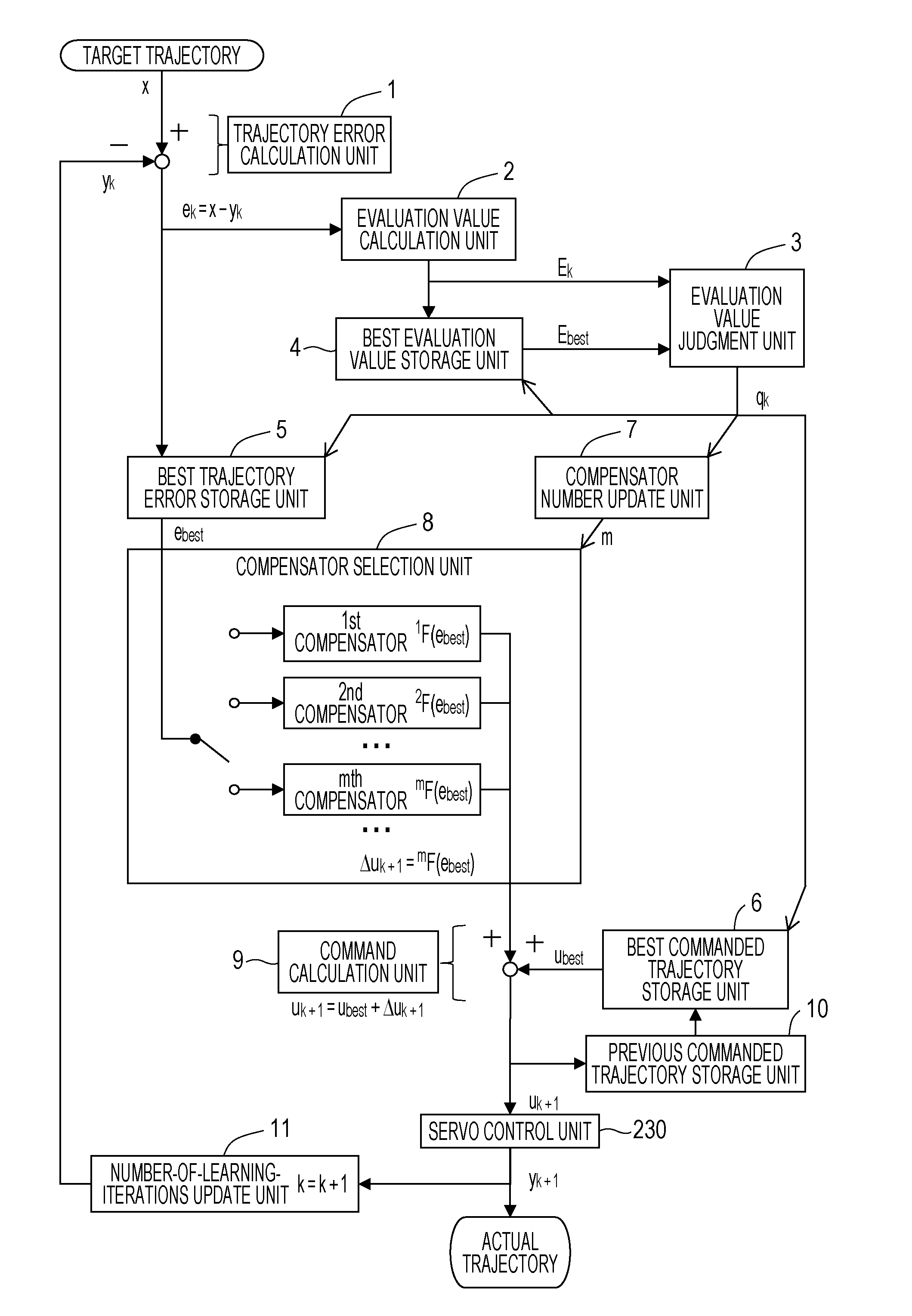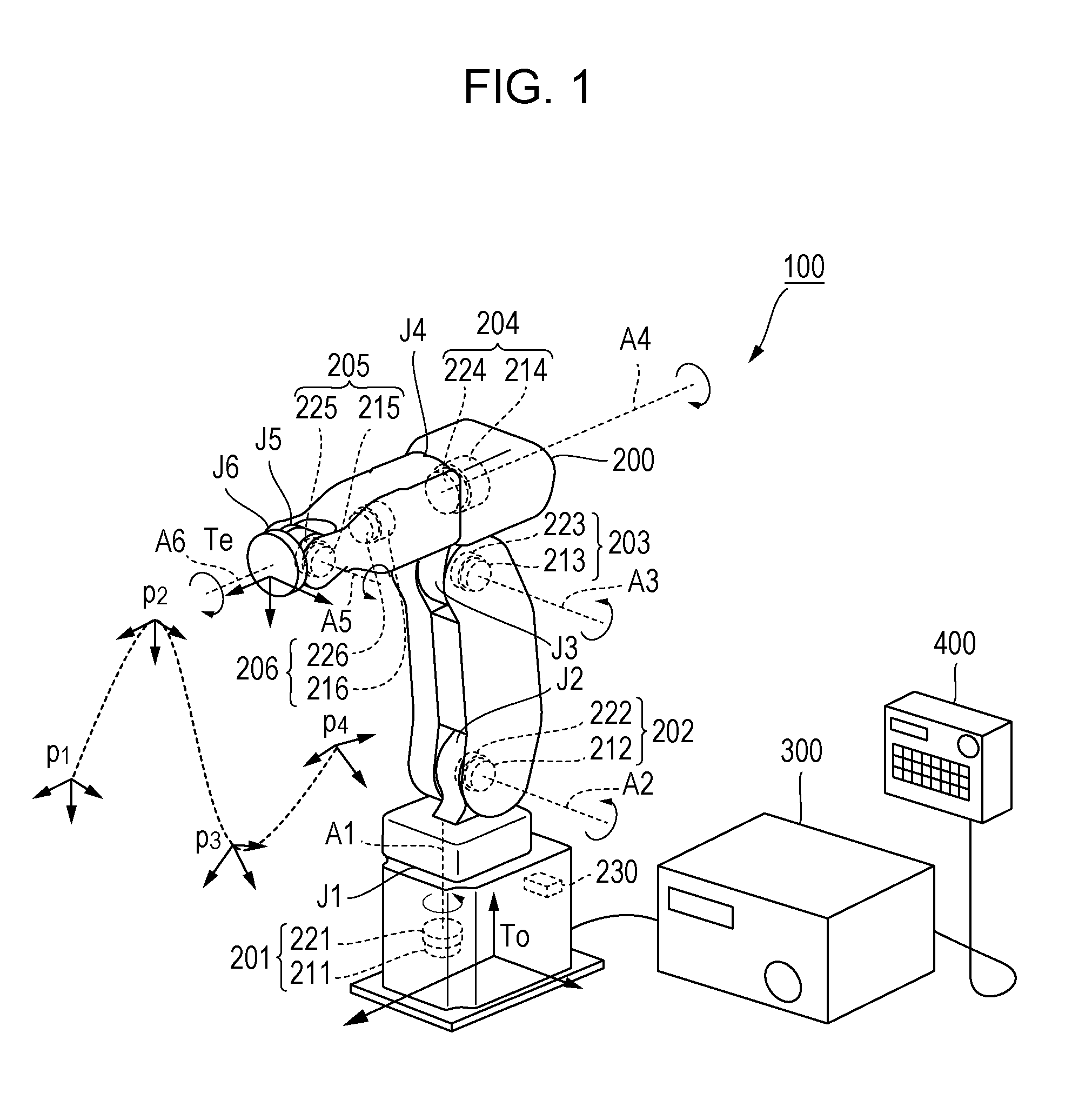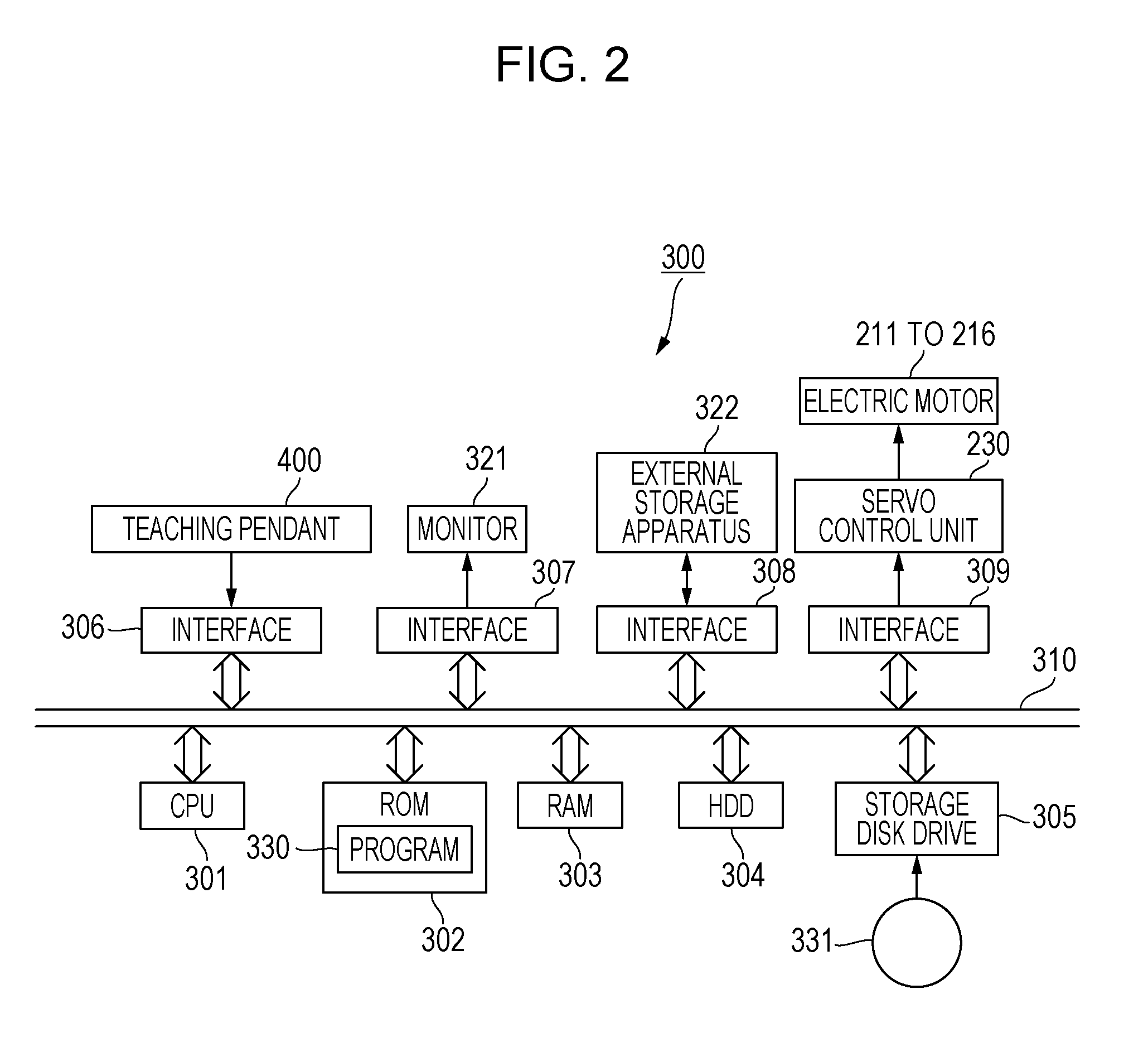Robot control method, robot control apparatus, robot control program, and storage medium
- Summary
- Abstract
- Description
- Claims
- Application Information
AI Technical Summary
Benefits of technology
Problems solved by technology
Method used
Image
Examples
first embodiment
[0029]A first embodiment is described below with reference to FIG. 1 to FIG. 11. First, a general structure of a robot apparatus is described. As illustrated in FIG. 1, a robot apparatus 100 includes a robot arm (robot) 200 functioning as a multijoint robot and a robot control apparatus 300 that controls the robot arm 200. The robot apparatus 100 further includes a teaching pendant 400 functioning as a teaching apparatus that transmits a plurality of pieces of teaching-point data to the robot control apparatus 300. The teaching pendant 400 is operated by a human operator to specify an operation of the robot arm 200 or the robot control apparatus 300.
[0030]In the present embodiment, the robot arm 200 is, for example, a 6-joint robot. The robot arm 200 has a plurality of (more specifically, six) actuators 201 to 206 that drive the respective joints J1 to J6 to rotate about corresponding joint axes A1 to A6. The robot arm 200 is capable of moving such that a tip of a hand (an end point...
second embodiment
[0096]Next, a second embodiment, which is a partial modification of the first embodiment, is described below with reference to FIG. 12 and FIG. 13. The second embodiment is different from the first embodiment in that a process is added to seek parameters of a compensator. In the compensator according to the conventional learn-and-control technique, parameters such as a gain of the compensator are determined in advance. However, optimum values of the parameters are not necessarily known in advance, and the selection of the parameter values may determine the performance of the lean-and-control process. For example, it is allowed to reduce the number of repetitions of learning by setting the gain to a large value. However, in this case, high stability may be lost and an oscillation may occur, which may make it impossible to perform the learning control operation. It is very clear to select good parameter values, but parameter values suitable for the learning control operation are not k...
third embodiment
[0111]Next, a third embodiment, which is a partial modification of the first embodiment, is described below with reference to FIG. 14. The third embodiment is different from the first embodiment in that the best commanded trajectory ubest is stored in a different manner from that according to the first embodiment. In the third embodiment, a previous correction of the trajectory is stored. When degradation occurs, the commanded trajectory is returned to the previous commanded trajectory and is employed as the best commanded trajectory ubest. As a result the best commanded trajectory ubest is effectively stored.
[0112]In the third embodiment, as illustrated in FIG. 14, a previous correction of trajectory storage unit 12 and a best commanded trajectory calculation unit 13 are provided. The previous correction of trajectory storage unit 12 stores the correction of the trajectory Δuk. In a case where an improvement in the evaluation result qk is obtained, the best commanded trajectory cal...
PUM
 Login to View More
Login to View More Abstract
Description
Claims
Application Information
 Login to View More
Login to View More - R&D
- Intellectual Property
- Life Sciences
- Materials
- Tech Scout
- Unparalleled Data Quality
- Higher Quality Content
- 60% Fewer Hallucinations
Browse by: Latest US Patents, China's latest patents, Technical Efficacy Thesaurus, Application Domain, Technology Topic, Popular Technical Reports.
© 2025 PatSnap. All rights reserved.Legal|Privacy policy|Modern Slavery Act Transparency Statement|Sitemap|About US| Contact US: help@patsnap.com



